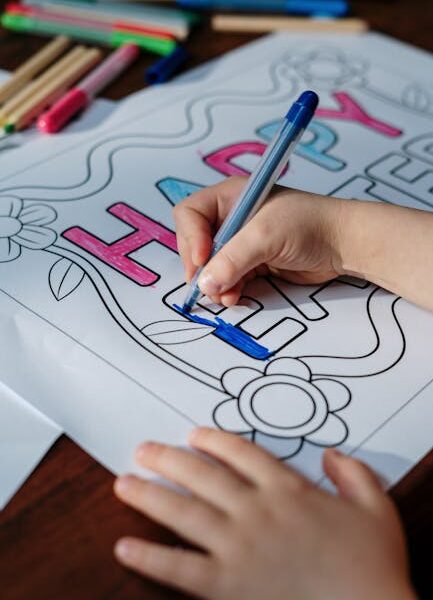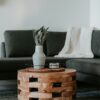Introduction
Welcome to the world of coffee table styling, where a little creativity goes a long way. Your coffee table is more than just a surface for coffee cups and remote controls; it’s a central focus in your living space that offers a unique opportunity to showcase your personal style and flair. Whether you’re aiming for a chic minimalist look or a vibrant, eclectic display, the right styling techniques can transform your coffee table into a delightful highlight of your home decor. Get ready to discover expert tips that will elevate your coffee table from mundane to magnificent!
Importance of Coffee Table Styling
 Image courtesy: Unsplash
Image courtesy: Unsplash
Enhancing the Aesthetic Appeal
The coffee table often acts as a focal point in any living room, influencing the overall feel and atmosphere. Proper styling can elevate this humble piece of furniture into a striking centerpiece, enhancing the aesthetic appeal of your space. Styling isn’t just about being decorative; it’s about creating harmony within the room. By thoughtfully selecting items that complement each other and the existing decor, you can create a cohesive and inviting look. Whether it’s through a balance of colors, textures, or symmetry, the goal is to draw the eye and make your living area feel complete and welcoming.
Functional Aspect of Coffee Table Styling
Besides beauty, a well-styled coffee table also serves multiple functional aspects. It’s the perfect place to showcase your personality through items that speak to you—be it books, unique artifacts, or even greenery. Moreover, it can serve practical needs by housing remotes, coasters, and other frequently used items in an accessible yet tidy manner. By incorporating elements like trays or decorative boxes, you can keep these items organized and handy. This blend of functionality and style not only makes your space more liveable but also ensures it remains stylish and clutter-free.
Selecting the Right Coffee Table
Size and Proportion
Choosing the right coffee table starts with considering the size and proportion relative to your seating area. It should be the appropriate height and length to complement the surrounding furniture, typically one-half to two-thirds the length of your sofa. This ensures the table is neither too large to overpower the space nor too small to be functional. Keep in mind, the height should be close to the seat height of your sofa, making it easy and comfortable for use while seated.
Material and Finish
The material and finish of your coffee table can significantly influence the look and longevity of the piece. Common materials include wood, glass, metal, and composite. Each comes with its aesthetic vibe and maintenance requirements. For instance, glass tables reflect more light and create a sense of space but might require frequent cleaning. Wooden tables bring warmth and tradition but might need periodic treatment to maintain their appearance. When choosing, consider not just the style but also the practical aspects of upkeep and durability.
Matching the Style of Your Space
Finally, it’s crucial to ensure that your coffee table complements the overall style of the room. Whether your decor is modern, traditional, or eclectic, the table should harmonize with the room’s aesthetic. For a modern look, consider minimalist designs with clean lines and metallic accents. For a more traditional space, a classic wooden table might be more appropriate. If your living room incorporates various styles, choose a coffee table that can bridge different elements for a cohesive look.
Incorporating Personal Touches
Adding personal touches to your coffee table decor not only reflects your personality but also creates a more inviting and intimate space. Personalizing your coffee table makes it a focal point that catches the eye and sparks conversation among guests.
Family Photos or Artwork
Incorporating family photos or cherished artwork into your coffee table arrangement can add a warm, personal touch. Choose elegant frames that complement the overall style of your room. Consider using a mini easel to display a favorite piece or create a small gallery cluster of several frames at varying heights. This approach keeps the table surface organized and adds a layered look to the decor.
Personal Mementos
Another way to personalize your coffee table is by displaying items that have sentimental value. This could be anything from souvenirs from your travels to a vintage chess set or even a well-worn book. Arrange these items thoughtfully so each piece can be appreciated. If you’re worried about clutter, choose a decorative tray to contain these personal mementos, giving them a designated space without sacrificing style.
Playing with Textures
Texture plays a crucial role in coffee table styling as it can add depth and interest to your living space. By mixing different textures, you can enhance the tactile appeal and create a more dynamic setup.
Mixing Different Textimes
Start by considering a variety of materials such as metal, glass, fabric, and wood. For instance, a smooth, glass vase can contrast beautifully against a rough, wooden tray. Add a soft, plush throw or a few textured coasters to juxtapose with sleeker, modern elements. These contrasting textures engage the senses and make the space more engaging and visually interesting.
Utilizing Natural Elements
Incorporating natural elements like stone, plants, or woven materials brings an organic and earthy feel to your coffee table styling. Consider a small potted plant or a fresh bouquet of flowers to breathe life into the room. Stone coasters or a small decorative sculpture create a striking natural component. Opt for a rattan basket or a wood bowl to add softness and warmth. The key is to find balance and harmony among these natural textures, enhancing the overall aesthetic without overwhelming the space.
Utilizing Colors Effectively
Harmonizing with the Room’s Color Scheme
When it comes to coffee table styling, it is essential to consider the overall color palette of the room. A well-thought-out approach ensures that the coffee table doesn’t just stand alone but complements the surrounding space. Start by identifying the dominant colors in your living area — look at the walls, the carpet, and the furniture. Select decorative objects for your coffee table that echo these hues. For instance, if your living room features soft pastels, choose items in matching or slightly contrasting pastel shades to create a cohesive look. This synergy not only enhances the aesthetic appeal but also creates a seamless visual flow throughout the room.
Adding Pops of Color
While blending is crucial, introducing vibrant pops of color can transform your coffee table from bland to captivating. Consider a bright vase, a stack of colorful books, or a bold piece of decorative art to inject energy and interest. These elements should stand out but not clash with the existing decor. If your room’s color scheme is neutral, almost any color will add a lively contrast. However, it’s important to keep it to one or two accent pieces to avoid overwhelming the space. These bursts of color can draw the eye and serve as conversation starters during gatherings.
Balancing Height and Composition
Layering Items for Visual Interest
Creating layers is a fantastic way to add depth and texture to your coffee table. Begin with a flat base, such as a tray or large book, and build from there. You can layer decorative objects like candles, small sculptures, or even coasters. Fabric elements such as a small throw or decorative table runner can also add a softening effect. Remember, the key to successful layering is variance in materials and textures — mix glass, fabric, metal, and wood to keep the display interesting and dynamic.
Using Varying Heights
Varying the heights of items on your coffee table not only adds interest but also guides the viewer’s eye through the space. Use a mix of short, medium, and tall objects to create a visually engaging setup. For instance, pair taller candlesticks or a high vase with lower stacks of books or a small bowl. This strategy prevents your table from looking too flat or cluttered. When arranging these items, consider their practical use and visual weight — heavier, bulkier items should be placed lower, while lighter, delicate items can be raised to catch the eye.
Creating a Theme or Vignette
When styling a coffee table, creating a coherent theme or vignette can really draw the eye and give your space a polished look. A well-thought-out theme ties together colors, textures, and elements to create a harmonious visual story.
Seasonal Themes
Experiment with seasonal themes to keep your coffee table looking fresh and timely throughout the year. For spring, think about using pastel colored vases, floral arrangements, or decorative birds. In the summer, a beach theme with shells, blue and sand-colored decor can be perfect. For fall, incorporate earthy tones with small pumpkins, dried leaves, and cinnamon sticks. During winter, a palette of whites and silvers alongside candle holders and pinecones can create a warm, festive atmosphere. Using seasonal themes not only makes it easy to decide on your decor but also keeps your living space dynamic and engaging.
Styling with a Central Object or Theme
Choosing a central object or theme can serve as a guiding focal point for your coffee table styling. This could be anything from a large, striking vase, a stack of vintage books, or a sculpture. Once you have your centerpiece, arrange smaller items around it in a way that complecments and highlights this feature. For example, if you opt for a globe, you might surround it with travel books and a small, decorative airplane to enhance the adventure theme. This method of styling helps create a visual impact that is both organized and captivating.
Practical and Functional Elements
While aesthetic appeal is significant, functionality should not be overlooked. Ensuring your coffee table setup is practical enhances both the usability and style of your space.
Incorporating Storage Solutions
Especially in a living room with limited space, incorporating storage solutions within your coffee table decor can be a game changer. Consider using items like storage ottomans or baskets under a transparent table. These can hold magazines, remotes, and other essentials while keeping them out of sight but easily accessible. For tables lacking lower shelves, using small decorative boxes or vintage suitcases can serve as both a charming decor element and a compact storage space.
Adding Decorative Trays or Boxes
Decorative trays or boxes not only add to the aesthetics but also help contain smaller decor items and reduce clutter. Choose trays or boxes that complement your overall interior theme—metallic elements for a modern look, wooden pieces for a rustic vibe, or sleek glass for a contemporary setting. They can hold everything from drink coastaers to flower pots and small trinkets. The key is to ensure they are both functional and beautiful, maintaining the balance between practicality and style on your coffee table.
Maintenance and Refresh Tips
 Image courtesy: Unsplash
Image courtesy: Unsplash
Regular Cleaning and Decluttering
Keeping your coffee table looking its best involves regular maintenance. Start with routine cleaning by dusting the surface at least once a week to avoid the buildup of debris and smudges. A microfiber cloth works well for this purpose, as it can capture dust without scratching the surface. For glass tables, use a glass cleaner to maintain a streak-free shine. It’s also essential to declutter the surface regularly. Remove old magazines, remote controls, and any items that do not serve a decorative purpose. This not only keeps your table looking organized but also ensures that your decor pieces stand out.
Seasonal Updates and Rotation of Decor Items
One dynamic way to keep your coffee table looking fresh and exciting is by making seasonal updates. Here are some ideas on how to do this effectively:
– Spring: Incorporate floral arrangements or bright, pastel accessories to echo the blooming outdoors.
– Summer: Opt for nautical-themed decor or fresh green plants to bring a vibrant summer feel.
– Fall: Include rustic elements like pinecones or candles with warm scents to create a cozy atmosphere.
– Winter: Display holiday-themed decorations or use luxurious textures like velvet or faux fur to add warmth.
Rotating your decor items is also a clever way to maintain interest and prevent your styling from becoming stale. Change your centerpiece or swap out smaller decor items every few months to keep the look engaging and fresh. This practice not only rejuvenates the space but also allows you to experiment with different styles and color schemes throughout the year.
Conclusion
Recap of Top 10 Decor Tips
In this guide, we explored the essential strategies to enhance your coffee table’s appeal. We highlighted the importance of choosing a vibrant centerpiece, incorporating varied heights and textures, and strategically placing books and trinkets. We also discussed the value of using trays to organize items, adding natural elements, and experimenting with color schemes and themes to reflect personal style. Including personal touches, using lighting smartly, and updating seasonally are also key to keeping your table both functional and stylish.
Encouragement to Experiment and Personalize Your Coffee Table Styling
Your coffee table is more than just a piece of furniture—it’s a canvas for your creativity. Don’t hesitate to try new arrangements or swap out items based on seasons or your current décor mood. Remember, the best coffee table styling reflects who you are and how you live. So, use these tips as a starting point and then let your imagination and personal taste lead the way. Happy decorating!









